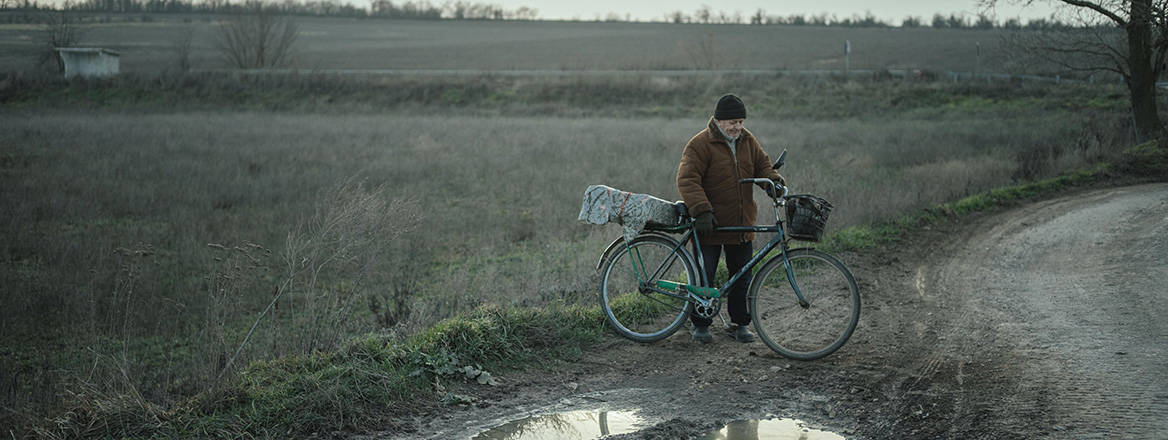Russia's Finances Beyond War – Supporting the Occupied Regions
Russia will struggle to afford the reconstruction of territory it is occupying in Ukraine.
President Trump’s most recent threat – to slap Russia’s economic trade partners with prohibitive tariffs in a bid to push through war negotiations with Ukraine – has returned to the fore discussions about the durability of Russia’s economy.
Last month’s annual St Petersburg Economic Forum (SPIEF) epitomised some of the fractures in Russia’s elite over the financial trajectory of the country. SPIEF is designed to showcase the very best of Russia’s investment potential – if in previous years this had been a platform for foreign investors to identify new opportunities, this year it seemed to point to a disconnect between President Putin and his ministers.
But other problems tangential to the war – which were not discussed at SPIEF – centre around Russia’s ability to support and stimulate those territories of Ukraine that it has seized, to avoid them becoming a further and long-term drain on its resources.
Economic Woes
Aside from the usual speculation about which Western countries would attend or shun the highly politicised proceeds, the distinction between Putin’s assessment of the economy, and the rather more muted discussion from his officials was particularly stark this year.
CEO of state-controlled Sberbank and long-time Putin ally German Greff focused on the business and investment side, warning that high interest rates and an overvalued Ruble were impacting on investment and stymieing Russia’s economic growth, describing the economy as a ‘perfect storm’, with some Russian business struggling with non-payments.
But by far the most dire predictions were those of Minister for Economic Development Maxim Reshetnikov, who maintained that Russia is on the brink of recession, a headline picked up by numerous Russian media outlets and which overshadowed many of the other debates at SPIEF this year. Reshetnikov’s reasoning appeared to be linked to Russia’s GDP growth – for the first quarter of 2025 it has been significantly lower than the same period in 2024, and the downturn has sparked consternation.
This decline is largely because Russia’s previous GDP expansions since 2022 were driven by Kremlin-mandated wartime spending, giving a false impression of growth – this was not due to stimulation by investment or a particularly thriving business climate. The illusion of growth, stimulated by high defence spending, likely conceals more structural problems. For now, Russia’s growth predictions for 2025 sit somewhere between 1.5% (according to VTB, Russia’s second largest bank) and 2.5% (Reshetnikov’s own office), with the Central Bank predicting 1-2%.
Officials Vs Putin?
Reshetnikov’s gloomy outlook is not a new narrative – he has consistently pointed to labour shortages in Russia as one of the greatest internal risks for Russia, something that Putin has himself acknowledged, although the gap between acknowledgement and activity towards this remains unbridged.
As Russia makes incremental territorial gains in Ukraine . . . it must invest and stimulate the local economy, if it is to be anything other than a drain on resources
Publicly, the Kremlin has proudly touted the unemployment rate as at an historic low, ignoring the obvious reality that this is because all available manpower is being utilised in service of the war, or emigration to dodge the draft. This also overlooks serious and well-publicised staff shortages in technical enterprises such as Russian Railways – many of their engineers and locomotive crews have either been mobilised or left the country to avoid the draft, resulting in a shortfall of almost 5,000 personnel required to run its extensive transport network. This naturally has an impact on Russia’s ability to boost its trade with allies such as China and Iran.
Head of the Central Bank Elvira Nabiullina has been realistic about Russia’s economic progress and its limitations, maintaining since the start of the war that Russia should brace itself for additional sanctions. In post since 2013, she has worked since Russia’s annexation of Crimea in 2014 and the subsequent imposition of sanctions to shift the country away from dependence on western financial structures and currencies, moving Russia’s reserves into Chinese currency or Euro – around USD200bn of the Central Bank’s assets are already in gold and renminbi. This has made the Russian economy more resilient to sanctions that reduce Russia’s access to dollars. Russia’s establishment of alternative pay structures to the SWIFT banking system, or the use of Chinese payment systems, while still in their infancy and not approaching the size of SWIFT, are for now reasonably effective.
But despite a broad consensus about economic challenges between ministers, this was in stark contrast to Putin’s own assessment at SPIEF. Indeed, Putin focused on Russia’s GDP growth, suggested that defence manufacturing was not the only driver of progress, and that industries such as agriculture and construction were one of the top performing sectors.
This disparity of views has been seized upon as evidence of disunity between Putin and his federal officials. But while Putin may not have been prepared to discuss Russia’s economic woes at SPIEF – which is after all supposed to be a platform to showcase the country to foreign investors – he is undoubtedly aware of some of the realities of maintaining high defence spending. In December 2024 in a meeting with the Board of the Ministry of Defence, he noted that while 7.2% of Russia’s GDP is to be spent on its military and defence, he also recognised that this cannot be endlessly increased without consequence.
Drains on Russia’s Resources
But there are other pulls on the Russian economy beyond sanctions and military spending on hardware, which were not expressly discussed at SPIEF.
As Russia makes incremental territorial gains in Ukraine, to consolidate its hold over the territory it has already taken, it must invest and stimulate the local economy, if it is to be anything other than a drain on resources. While there is undoubtedly a political angle in cementing control over these regions and constructing infrastructure, practically speaking, Russia must also account for the social welfare of those living there, including funding pensions and benefits – a significant financial burden.
Russia has set up two state programmes to account for funding Crimea and the four occupied territories of Ukraine. In 2025 alone, more than RUB 108 million was allocated for Crimea, and RUB 319 million for the Ukrainian territories, figures that are set to continue more or less unchanged until 2027. The Kremlin’s tactic earlier in the war of splitting up the budgets of wealthier regions such as St Petersburg to fund ‘reconstruction’ projects in occupied regions of Ukraine was unpopular, resulting in less funds available for the city.
The Kremlin has attempted to stimulate local investment in the territories through a variety of tax reduction schemes and offering support to SMEs, but these are unlikely to bear economic fruit in the short term. Russia’s patronage of the occupied regions – both economically and through its horizontal political ties – is planned to last at least until 2030, until these regions are able to operate without Moscow’s core financial support.
These regions are not the only drain on resources – the Kremlin has had to boost its regional spending in places like the southern Kursk region, where in 2024 the Ukrainian military for months managed to seize several Russian border towns. This was only resolved in April 2025 – over the past few months the Kremlin has had to shore up civilian defences and support displaced residents, to a cost of around RUB 43.9 billion from the Reserve Fund, allocated to Kursk on an ad hoc basis. The costs of reconstruction in Kursk alone (not including neighbouring Belgorod which has experienced similar shelling), runs to an estimated RUB 700 billion – a figure unlikely to be readily available, leaving the region likely impoverished for several years.
All of this suggests that military spending and sanctions aside, Russia in the long term may have greater financial problems on its hands, as it attempts to push more deeply into Ukrainian territory.
© RUSI, 2025.
The views expressed in this Commentary are the authors', and do not represent those of RUSI or any other institution.
For terms of use, see Website Terms and Conditions of Use.
Have an idea for a Commentary you'd like to write for us? Send a short pitch to commentaries@rusi.org and we'll get back to you if it fits into our research interests. View full guidelines for contributors.
WRITTEN BY
Emily Ferris
RUSI Senior Associate Fellow, International Security
- Jim McLeanMedia Relations Manager+44 (0)7917 373 069JimMc@rusi.org




